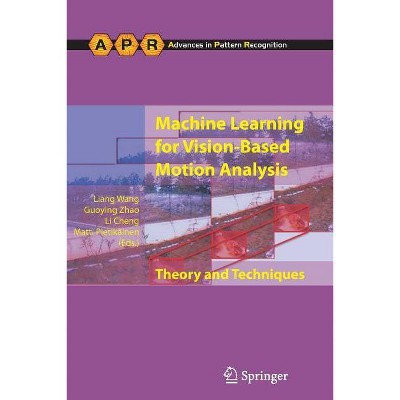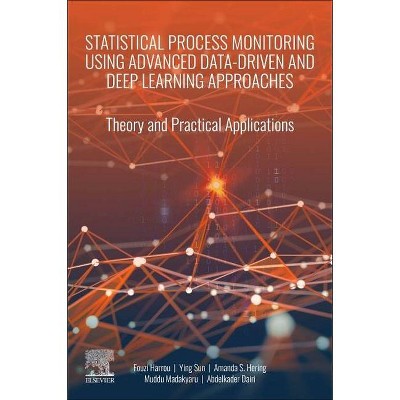Computer Vision Using Deep Learning - by Vaibhav Verdhan (Paperback)

Similar Products
Products of same category from the store
AllProduct info
<p/><br></br><p><b> Book Synopsis </b></p></br></br><p>Organizations spend huge resources in developing software that can perform the way a human does. Image classification, object detection and tracking, pose estimation, facial recognition, and sentiment estimation all play a major role in solving computer vision problems. </p><p>This book will bring into focus these and other deep learning architectures and techniques to help you create solutions using Keras and the TensorFlow library. You'll also review mutliple neural network architectures, including LeNet, AlexNet, VGG, Inception, R-CNN, Fast R-CNN, Faster R-CNN, Mask R-CNN, YOLO, and SqueezeNet and see how they work alongside Python code via best practices, tips, tricks, shortcuts, and pitfalls. All code snippets will be broken down and discussed thoroughly so you can implement the same principles in your respective environments.<br></p><p><i>Computer Vision Using Deep Learning</i> offers a comprehensive yet succinct guide that stitches DL and CV together to automate operations, reduce human intervention, increase capability, and cut the costs. <br></p><p><b>What You'll Learn</b><br></p><p></p><ul><li>Examine deep learning code and concepts to apply guiding principals to your own projects</li><li>Classify and evaluate various architectures to better understand your options in various use cases</li><li>Go behind the scenes of basic deep learning functions to find out how they work</li></ul><p></p><p><b>Who This Book Is For</b></p><p>Professional practitioners working in the fields of software engineering and data science. A working knowledge of Python is strongly recommended. Students and innovators working on advanced degrees in areas related to computer vision and Deep Learning.</p><p/><br></br><p><b> From the Back Cover </b></p></br></br><p>Organizations spend huge resources in developing software that can perform the way a human does. Image classification, object detection and tracking, pose estimation, facial recognition, and sentiment estimation all play a major role in solving computer vision problems. </p><p>This book will bring into focus these and other deep learning architectures and techniques to help you create solutions using Keras and the TensorFlow library. You'll also review mutliple neural network architectures, including LeNet, AlexNet, VGG, Inception, R-CNN, Fast R-CNN, Faster R-CNN, Mask R-CNN, YOLO, and SqueezeNet and see how they work alongside Python code via best practices, tips, tricks, shortcuts, and pitfalls. All code snippets will be broken down and discussed thoroughly so you can implement the same principles in your respective environments.<br></p><p><i>Computer Vision Using Deep Learning</i> offers a comprehensive yet succinct guide that stitches DL and CV together to automate operations, reduce human intervention, increase capability, and cut the costs. </p><p>You will: <br></p><p></p><ul><li>Examine deep learning code and concepts to apply guiding principles to your own projects</li><li>Classify and evaluate various architectures to better understand your options in various use cases</li><li>Go behind the scenes of basic deep learning functions to find out how they work</li></ul><p></p><p/><br></br><p><b> About the Author </b></p></br></br><p><b>Vaibhav Verdhan</b> is a seasoned data science professional with rich experience spanning across geographies and retail, telecom, manufacturing, health-care and utilities domain. He is a hands-on technical expert and has led multiple engagements in Machine Learning and Artificial Intelligence. He is a leading industry expert, is a regular speaker at conferences and meet-ups and mentors students and professionals. Currently he resides in Ireland and is working as a Principal Data Scientist. </p>
Price History
Price Archive shows prices from various stores, lets you see history and find the cheapest. There is no actual sale on the website. For all support, inquiry and suggestion messages communication@pricearchive.us




















